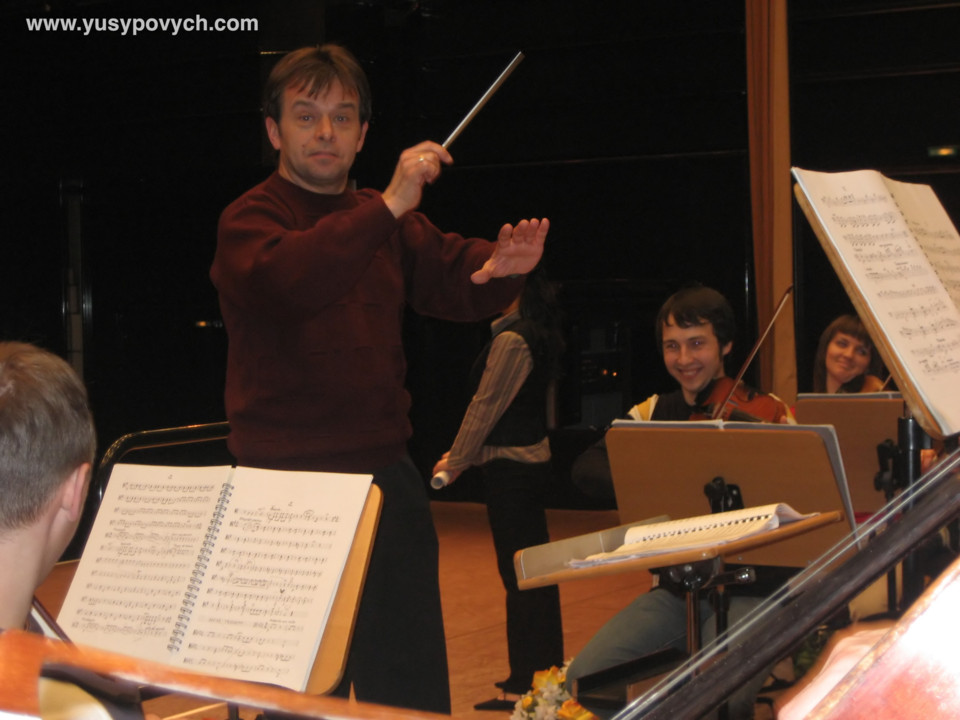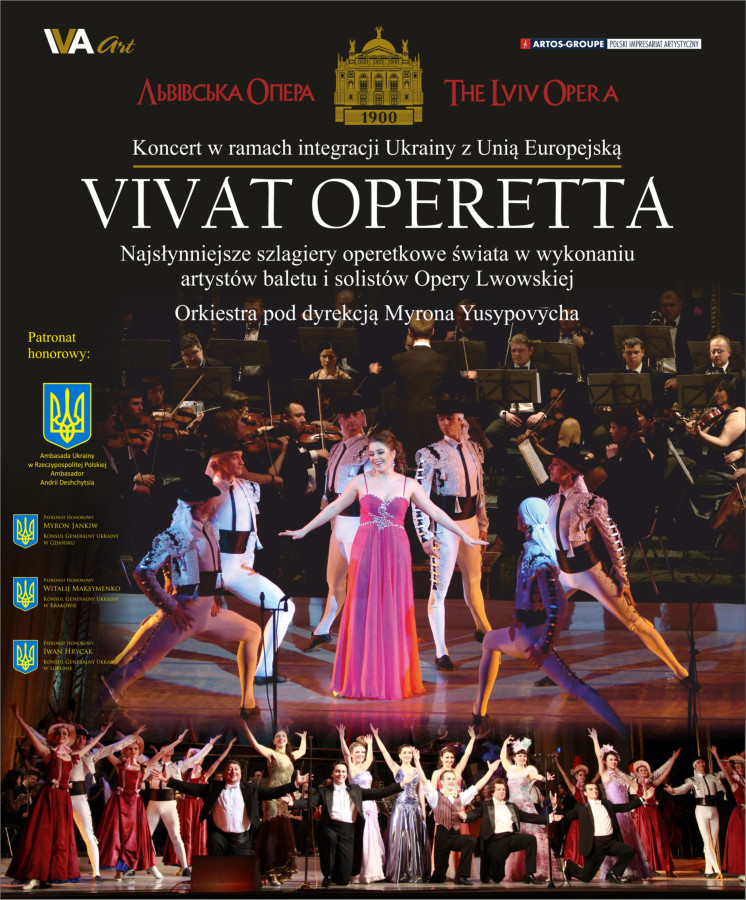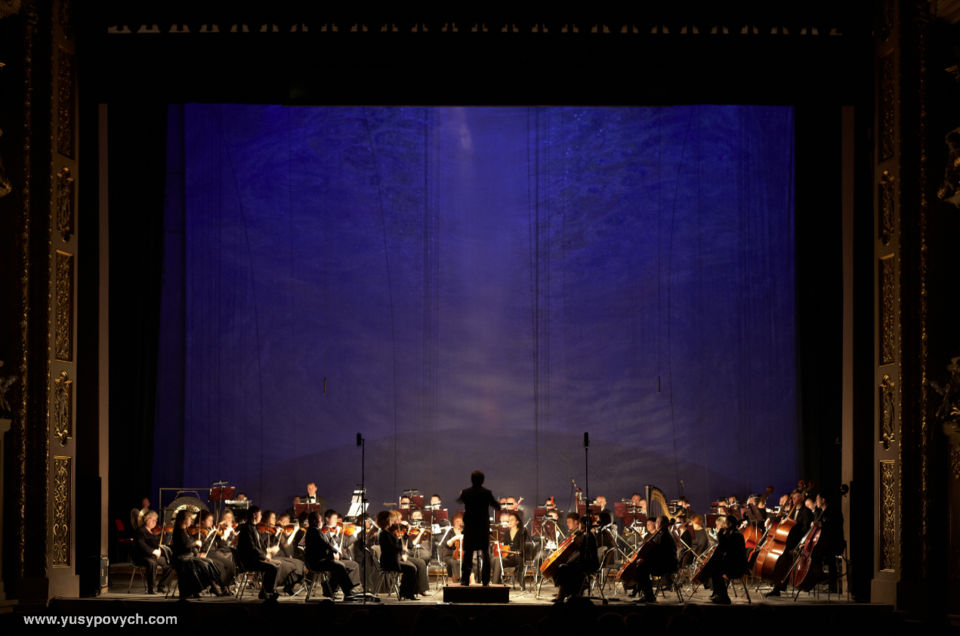July 17, 2015

Youth Orchestra
Everything in this world, every event, has its purpose, goal, meaning and consequence.
I am compelled to begin with this ancient philosophical postulate by an extraordinary event that happened in the cultural life of Lviv. Specifically, I am referring to the creation of a new youth symphony orchestra UNYSO – Ukrainian National Youth Symphony Orchestra.
This interesting and promising project was initiated by the artistic agency DaCapo of Austria and the S.Krushelnytska Lviv Music School – both well known to the citizens of Lviv.
Giving young musicians an opportunity to learn how to make the first steps in the difficult and exciting art of symphonic performance, is both altruistic and appropriate. This can be said not only for Lviv, with its huge young creative resource, but for all of Ukraine. And so, it is completely understandable that such a beginning evoked enthusiasm, hope and high expectations.
The practice of creating youth orchestras has existed in the world for a long time. But there is one very important nuance. In all successful similar projects, the initiative and leadership of this process comes from true experienced masters of conducting and not from amongst beginning conductors, and usually on a community basis.
The nurturing of a musician is not just the teaching of the craft of performance, be it on a violin or a French horn. It is first and most importantly, the nurturing and development of a creative free thinker, capable, through the craft of music, to express the essence and the content of this business. After all, this is exactly why the listener comes to the concert hall.
There is much to talk about and to think about with a gifted and extraordinary 16 – 25 year old person. But someone must provide the impulse and direct the craft into the higher creative regions. If done properly, we will marvel at the result! Similar examples are plenty – in Europe and even in the less “culturally experienced” states of South America – Venezuela, Peru… Certainly and without doubt!
Dry notes on paper will transform into an exciting breathing phenomenon that can capture and delight both the young performers, as well as, the audience. Every marked change of tempo in a score is not a set of empty words written by the composer. These are his soul’s ecstasy, delight, disappointment, despair… This is drama. And, this is real music, which will either delight the listener in the hall, or not.
But enough burrowing in these depths. On the other hand, without them there is no work in the musician’s profession. And, returning to the basic “craft”, I must point out a fundamental and ongoing problem in our orchestras – dynamic imbalance.
Perhaps the most important stipulation and evidence of an orchestra’s class is whether or not one can feel the ensemble while the orchestra is playing. It is not a secret that musical training in Ukraine continues to remain directed on individual solo performance. And, our best schools continue, according to Soviet traditions, to forge individual soloists-virtuosos. Unfortunately, this means that playing in ensembles and especially in an orchestra continues to be given little emphasis.
It is my firm belief that these skills need to be developed in a young musician from the very beginning. We must make it a priority to teach him or her to get joy from the process of creating music by participation in a common process. These are ancient European traditions. Without them the musicians of Europe will continue to see these young people as bright, colourful, talented, but… opportunistic egotists.
Is it really important to keep to the beat waved by that hand up at the front? Three-quarter time, or only once, or… something in between? But, that is precisely the obstacle. Results will vary depending on how one interprets the beat and how it is harmonized with fellow musicians. And, the listener either hears a light sensitive grand waltz or a heavy wagon that someone needs to exert themselves to push.
For, in truth, everything in this world is relative, and true beauty rests in harmony.
On the other hand, the question remains: is the UNYSO created to nurture young generations of musicians with master classes conducted by teachers from the West, as well as, assistance in getting instruments, strings…, or, is it only someone’s business, a self-indulgence, a cheap way to fulfil a personal ambition?
June 18, 2015

Vivat Operetta!
Is it possible to prepare a quality classical operetta concert program and perform it on a «prestigious» opera stage?
Judging by the results of the program “Vivat Оперета!”, which I was able to view at the S.Krushelnytska National Opera and Ballet House in Lviv, Ukraine, I would say a definite – YES!
A grand opera theatre, which the Lviv Opera House is, has large human, tangible and infrastructure resources and so, is able to provide the highest level of creative opportunities to produce the best examples of any genre. There are over 50 people in the orchestra, a diversity of young and not so young singers, a multitude of ballet dancers, opportunities for interesting choreographic and staging innovations, a wealth of costumes – all operatically grandious and glamourous. Practically, very few operetta theatres, with the exception of a few in the great operetta capitals in the world, can afford themselves such opportunities.
The soloists that merit mention are Lyudmyla Ostash, Vasyl Sadovskyy, Mykola Kornutyak, Andrii Benyuk. And then, Veronika Kolomishcheva, Yana Voytiuk, Vitalii Zahorbenskyy and Oleh Lanyuk – four young singers who represented operetta on the Lviv stage laudably.
On the whole, I would like to once again confirm that “Vivat Оперета!” on the Lviv stage is competely palatable.
May 19, 2015

Performing Wagner's Opera Music
Performing Wagner's music is a challenge both from the artistic as well as, the professional levels. It demands a high level of performance craftsmanship and maturity. Although it may be possible to approach the musical works of other classical, romatic and even contemporary composers casually, in Wagner can be disastrous.
By virtue of habit an audience wants «to grab onto» comprehensible and familiar melodies, rhythms and harmonies… But, in Wagner audiences are exposed to something more bountenous and offbeat. Alternatively, in a bad performance, the audience is offered nothing and then it is no longer Wagner and is no music at all.
True, it's not that easy to execute the quiet shade of pianissimo on a clarinet, a bassoon or a French horn while maintaining a balance and integral sound in the incredible beginning of the overture to Tannhauser. This is often a hard test for even for the most venerable of orchestras,
On the other hand, if the particular piece is performed sehr gehalten (very maintained) with the required German precision (and without it, it's not worth doing!) but, in a slightly louder tone, which is much easier to do even for a young musician, then the artistic canvas will improve…
But, let us return to the topic of arias and once again address the concept of the Word. In this particular case, there is an even greater challenge.
And let not some of my brethren think that somewhere in Munich, or Berlin or Zurich as compared to here in our native Lviv every German speaker has memorised all the opera libretti, including the Italian and French ones… He hasn't. But… nevertheless, there is a key difference.
Having paid 30-100EUR per ticket for a performance, the listener will not sit silently sit and hypocritically pretending that he is comfortable, is enjoying himself and understands everything. He will demand a precise interpretation and/or translation – by way of surtitles above the stage, or in a printed program, or, which rarely happens – from the announcer-narrator on stage. For he knows, that only then will he be able to obtain maximum pleasure and understanding. Only then will he be able to appreciate how skillfully and sonorously the artist is working. Or, and it can happen, he will be shocked and horrified as he comes to understand that the singer does not fully comprehend the text that he or she is singing. Unfortunately, the situation would be funny, if it weren't so tragic.
The introduction to the opera Lohengrin is an example of one one of the most magical pieces of music that has ever been created. Wagner, the creator, appears here in his full greatness and beauty.
But… the violins must play very quietly and at the same time with a very clear and articulate sound in the high register for this incredible Wagnerian 'universe'. Onto this 'colour' the composer has superimposed another layer – the flute and oboe, and later again, a silver web of violins… All of this as if he is recreating the modulations on the water's surface of the Scheldt River, where that magical white swan appears and the godly shinning knight, who brings goodness, approaches. O, these dreams…
This entire fragment is in essence one singular simple edification – a progressive increment followed by a culmination, the apotheosis progressing to a decline and the exit. Lohengrin, the Saviour, came, shone in his glory of truth and goodness, was not believed and hence returned whence he had come. So simple and brilliant and… yet so difficult.
April 2, 2015

Live Classical Music Concerts' Programs
The key to overcoming I don't understand classical music., and Live classical music concerts are not for me! is hidden in whether or not a live concert program adheres to certain principles of drama. Moreover, this is true of both philharmonic and opera stages.
When building live classical music concert programs, it is important to keep in mind some basic principles concerning the human capacity to perceive. Interestingly, the traditional form of constructing a symphony concert program does precisely that. A 10 minute overture, followed by a 30-40 minute concerto, and a 40-50 minute symphony in the second half of the concert is both logical and effective. Each one of these musical forms has its own harmonious personality and, as a result, provides its own impact on the human psyche, and consequently on the audience's ability to perceive and enjoy. Such sequential 'diversity' is readily appreciated by the audience. Each piece naturally flows into and adds to the the sparkle of the next piece. If we can make an analogy – there is an appetizer, followed by a salad and, finally, a large juicy steak. Of course, for desert some may still want some cheese, grapes and a compatible ros?, for example The Swan by Camille Saint-Sa?ns, Cs?rd?s by Vittorio Monti or a Mazurka by Fr?d?ric Chopin.
Finally, every conductor should keep in mind that a music piece fittingly performed according to its internal dramatic elements will have a much greater impact on an audience than the virtuoso shine of technical prowess or small sins of mechanical performance. For the ungroomed listener, it is precisely this that will either make or break a concert.
 Creating a New Youth Orchestra – Classical MusicNotes
Creating a New Youth Orchestra – Classical MusicNotes Famous Operettas in an Opera House – MusicNotes
Famous Operettas in an Opera House – MusicNotes Performing Wagner's Opera Music
Performing Wagner's Opera Music The Art of Creating Live Classical Music Concerts' Programs
The Art of Creating Live Classical Music Concerts' Programs


